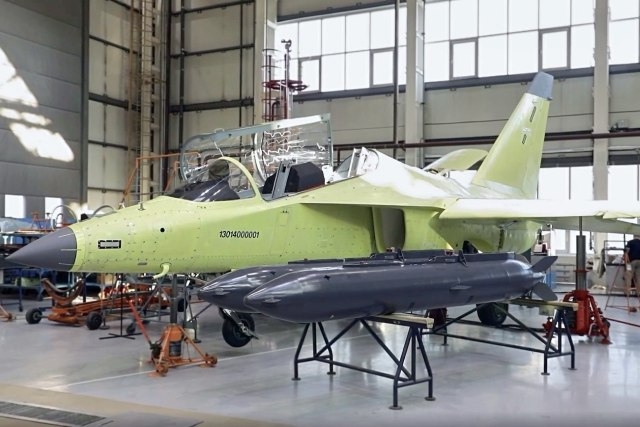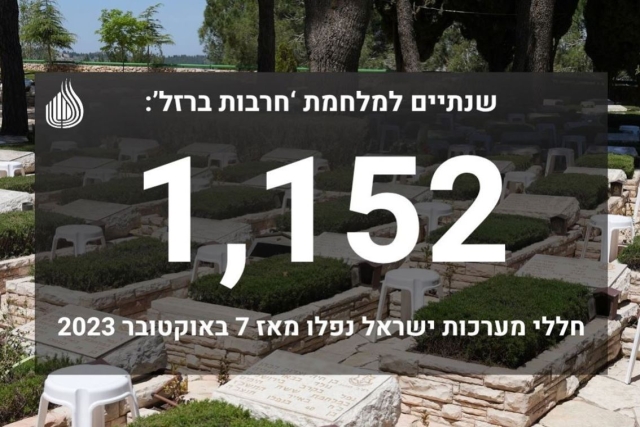Weapons Used by Israel and Hamas in Gaza Conflict
Israel deploys advanced equipment, Hamas utilizes improvised weapons and unconventional tactics

Armed Israel Air Force aircraft participating in the current Gaza conflict @IDF
The ongoing conflict in Gaza between Israel and the Palestinian group, Hamas have brought to light the diverse and contrasting weaponry and tactics employed by both sides.
Israel, with its robust military support from the United States, deploys advanced technology and modern equipment, while Hamas, a heavily armed guerrilla organization, utilizes an array of weapons and unconventional tactics.
Weapons Used by Israel:
Israel is perhaps the most heavily armed nation in the Middle East thanks to its $3.3 billion annual military funding from the United States, along with an additional $500 million for missile defense technology.
Air Force: Within the context of the Israel-Hamas conflict, the Israeli Air Force makes use of its heavy-payload F-15I Ra'am jets, in addition to uniquely configured F-35I Adir stealth fighters. While the F-35's stealth capabilities may appear unnecessary against Hamas, the aircraft's advanced sensor suite plays a pivotal role in effectively identifying and engaging targets.
Flying at altitudes beyond the reach of Hamas’ man-portable anti-aircraft missiles, Israeli warplanes have dropped both precision bombs that in a densely populated Gaza are known to have caused horrific human casualties.
Among the precision munitions employed, the 285-pound GBU-39 Small Diameter Bombs stand out. These compact glide bombs are designed to fit within an F-35's weapon bay, facilitating precision strikes on GPS coordinates while capable of penetrating up to 1 meter of concrete. However, gravity bombs, including the Mark 82, 83, and 84, are frequently employed, fitted with JDAM guidance kits (GBU-38, GBU-32, and GBU-31). These modifications grant the weaponry the capability to accurately hit designated GPS coordinates.
In the May 2021 conflict, the IDF prominently employed the 2,000-pound GBU-31 (V)4/B bunker-buster subvariant to demolish high-rise buildings in Gaza. Photos from Palestinian media unveiled other munitions used by the IDF, including the 500-pound GBU-54 'laser-guided JDAM,' designed for targeting moving objectives.
An image released by the IAF back then suggested potential use of the SPICE bomb kit, known as the 'Israeli JDAM,' which combines GPS and electrooptical guidance for enhanced precision and operational adaptability.
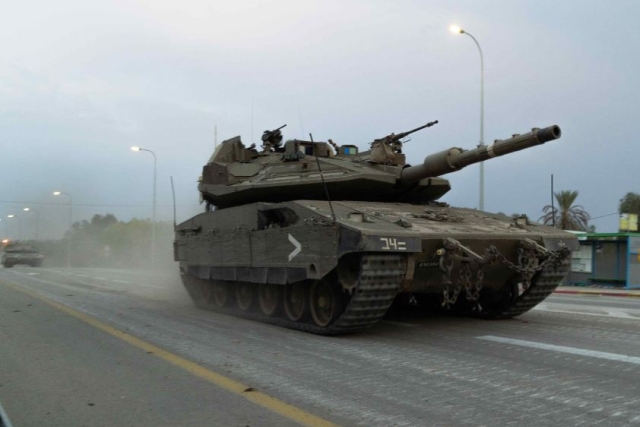
The Israel Defense Force (IDF) also utilizes a range of drones for surveillance and offense. The IDF employed armed Hermes 450 and 900 drones in the conflict with Hamas, despite Israel's non-official acknowledgment of their use. While these drones lack heavy bomb capabilities, they excel at extended orbiting for precise engagement. Photographic evidence has revealed small Mikholit missiles deployed by these drones, highlighting their evolving role.
This formidable air force is further fortified by missile defense systems such as the Iron Dome and Patriot for identifying and intercepting incoming threats.
Furthermore, reports have emerged regarding Israel's use of white phosphorus in military operations in the Gaza Strip, confirmed by Human Rights Watch. White phosphorus is known for its ability to cause severe burns and ignite structures and fields.
Ground forces: The IDF's inventory of battle tanks encompasses several models, notably the Merkava Mark IV, Merkava Mark III, and Magach 7C. The Merkava Mark IV, regarded as the pinnacle of the IDF's tank arsenal, is equipped with a potent 120mm smoothbore gun. These tanks also feature advanced defense systems designed to intercept and neutralize incoming anti-tank missiles, bolstering the safety of their crews.
Further enhancing the IDF's ground capabilities is the Spike or Tammuz NLOS anti-tank missile with range of around 16 miles. This missile system boasts a built-in video feed and can be operated akin to a drone, offering operators the flexibility to locate targets and manually redirect the missile as needed. IDF ground units effectively employed the Spike system to engage point and material targets.
The IDF's armored vehicles include the Namer heavy infantry fighting vehicle, the Achzarit heavy armored personnel carrier, and the M113 armored personnel carrier. The Namer IFV stands out as one of the most heavily armored infantry fighting vehicles globally, armed with a potent heavy machine gun, providing essential support in ground engagements.
Israeli military said for the first time since 2006, a unit called "Gedud HaRa'am 334" of the Fire Brigade Division 282 conducted an attack using rocket launchers of the type 'Mantach' against a military site of the Hamas in the Gaza Strip.
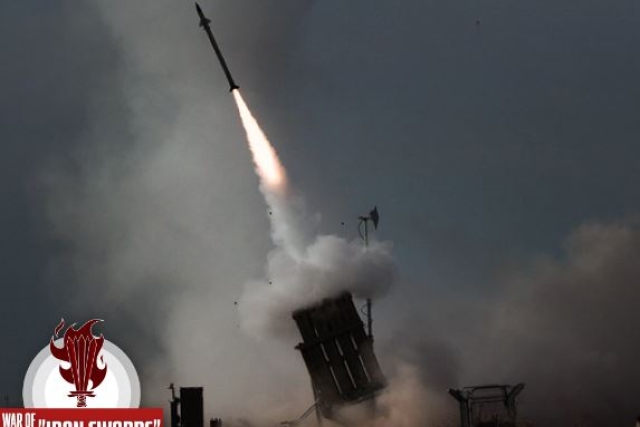
In addition to its tanks and armored vehicles, the IDF maintains a diverse array of artillery pieces. These include the M109 self-propelled howitzer and the Soltam M-71 towed howitzer, contributing to the IDF's formidable firepower and versatility in various combat scenarios.
Weapons Used by Hamas: Hamas stands out as one of the world's most heavily armed guerrilla organizations, with an estimated 15,000 to 20,000 fighters, although Israel claims the number may be as high as 30,000.
Hamas employs a diverse array of weapons, ranging from homemade rockets and modified AK-47s to decades-old Soviet machine guns and various low-cost, acquired arms. They produce unguided artillery rockets and have developed their versions of anti-tank missiles and rocket-propelled grenades (RPGs).
Notably, they avoid using armored vehicles similar to Israel's, as they present clear targets for Israeli strikes. Instead, they operate from utility vehicles like Land Rover Discoverys, mounting weapons such as 30-caliber heavy machine guns, allowing for increased mobility and devastating impact.
One of Hamas's strategies involves overwhelming Israel's Iron Dome missile defense system through sheer numbers of rockets, as demonstrated in recent days. They also deploy missiles resembling Iranian-made Fateh-110 surface-to-surface missiles, offering road-mobile capabilities and the ability to carry warheads weighing up to 500kg. Hamas possesses anti-tank missiles similar to the U.S.' Stinger, demonstrating diversity of equipment and training.
On October 11, Israel reported the dismantling of the Hamas air surveillance system in the Gaza Strip. The IDF revealed that Hamas had established a clandestine network of high-quality cameras hidden within water heaters across the Gaza Strip over the years. These cameras were used by Hamas to monitor airspace and gather critical intelligence.
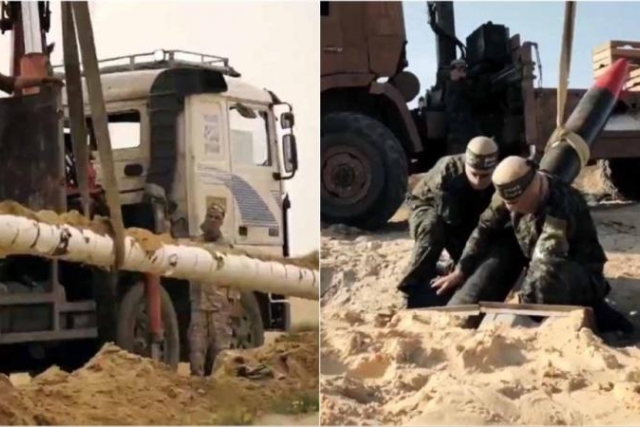
Unconventional methods: In a surprise attack on October 7, Hamas employed paragliders and drones for grenade drops, to penetrate Israel’s border fence and surveillance systems. Their adeptness in guerrilla warfare tactics made their assault take the Israeli military completely by surprise.
Despite Israeli control over various checkpoints in the Gaza Strip, the group's militias and military wing managed to breach Israeli borders and launch attacks on several Israeli cities. Numerous online videos support claims of Hamas using various means such as pickup trucks, boats, and motorized paragliders to infiltrate the security barrier, targeting Israeli towns, residents, and military posts.
Notably, they crossed into Israel using paramotors, catching Israeli security forces off guard. The challenge of detecting these unconventional aircraft has raised concerns, spurring discussions about Israel's readiness for such threats. Analysts emphasize the necessity of strengthening electro-optical and radar infrastructure and implementing a robust command-control system for effective paramotor detection.
Hamas has released videos of how they converted water pipes into missile-launching tubes. Their use of building material to fabricate makeshift weapons is another testimony to their warfare tactics honed after years of fighting the much-superior Israeli forces.
However, Hamas’ military capability has its limitations. A video released by the IDF shows how its commandos rescued a group of Israeli soldiers who had hidden themselves in a fortified shelter. Hamas fighters did not have break into the shelter and were earlier seen shooting at it with small arms.


